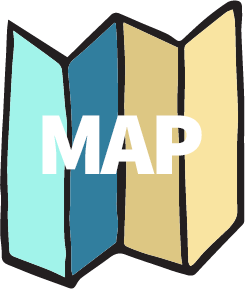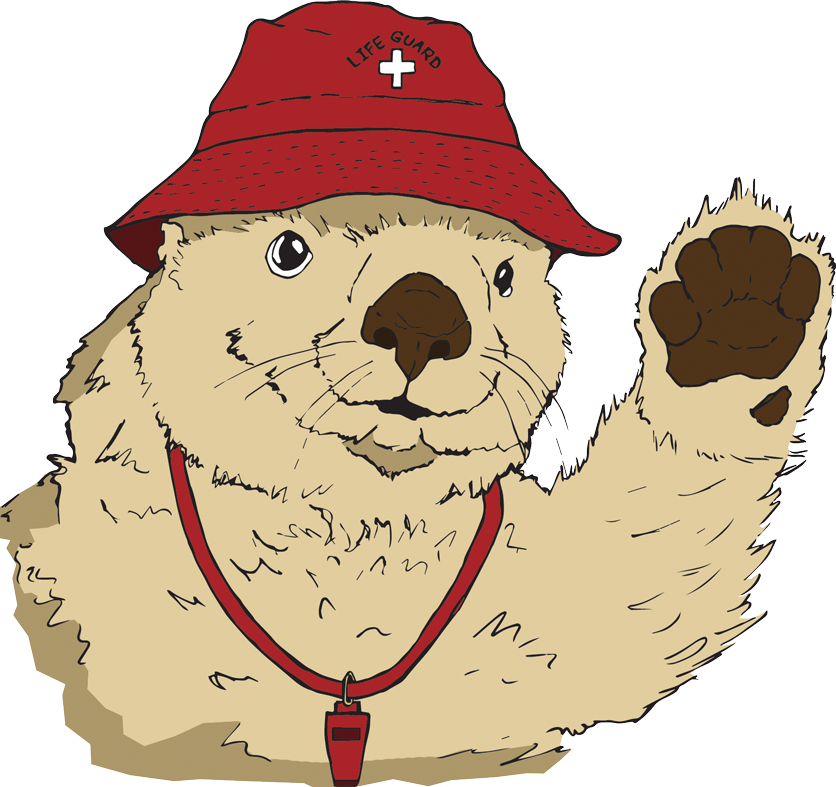
Uh-oh!
What happened? Kai Kalani's looking a little pale these days. Help bring color back to Happy Ocean by cleaning up the beach! Click or tap on pieces of trash you find to learn more about how plastic pollution impacts marine animals, then drag the items to your Happy Ocean tote bag.
To play again, click or tap on the logo!
A happy ocean is a clean ocean!
Nice work!
You cleaned up the beach! Well done!
Click or tap on the arrow to continue to the next scene, or use the map to choose a new location!
If you would like to learn more about the process of designing and developing Happy Ocean, please visit my

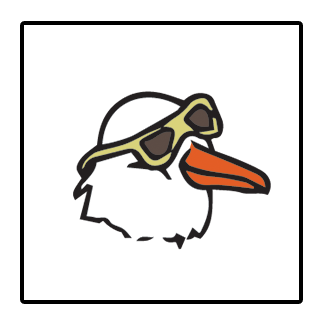
IDENTIFICATION CARD
Name: Kai Kalani
Height: 31 in.
Weight: 8.7 lbs.
Address: 22 1/2 Mokopuni Boulevard
Pollution Threat: plastic straws
Favorite Activity: sunbathing
Favorite Food: fish tacos

Laysan Albatross
Scientific name: Phoebastria immutabilis
Habitat: Northwestern Hawaiian Islands
Diet: squid, octopus, fish, crustaceans
Lifespan: 50+ years
Conservation Status: Near Threatened
Threats from Ocean Plastics
Albatrosses and other seabirds often consume plastic, especially small floating fragments. They spend most of their lives on the ocean, so when they get hungry, they just dip their beaks into the water, skimming the surface, scooping up squid, octopus, fish…and plastic. Plastic pieces can get stuck in their throats, slowly poison them, and damage their digestive systems. They often end up feeding plastic to their young by mistake, which ends up killing them. Plastic isn’t bird food, but it’s quickly becoming their main meal. Hopefully, it won’t be their last.
Fun Fact
Albatrosses can soar in the sky for six days without flapping their wings!
Learn more about seabirds

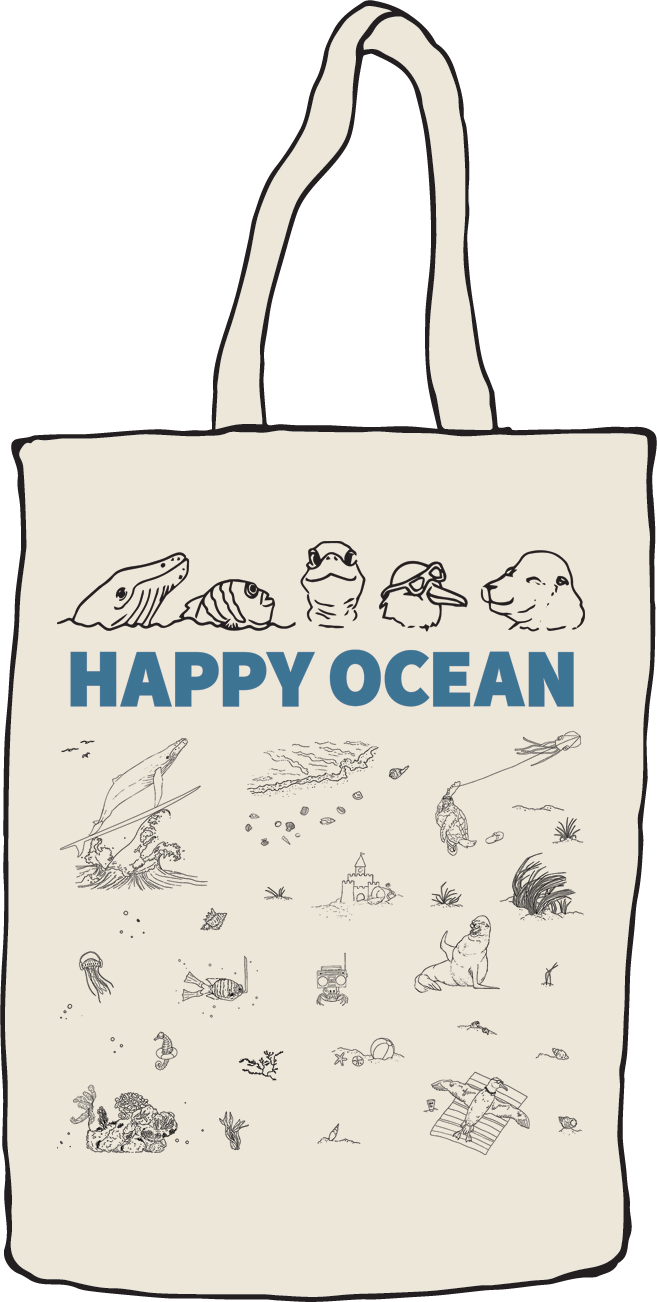
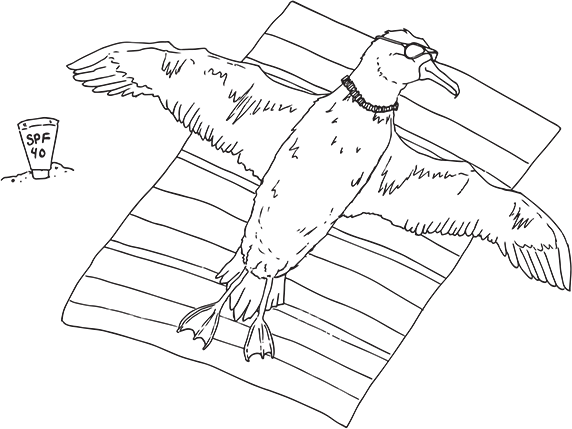




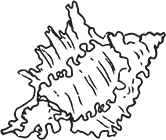

Plastic Straws
Americans use 500 million straws daily, making this the 11th most common type of ocean trash. Straws are easily picked up and mistaken for food by seabirds such as the Laysan Albatross. The plastic damages their digestive system, causing death. To learn more about how straws impact marine animals and how you can help, visit our plastics resource section.
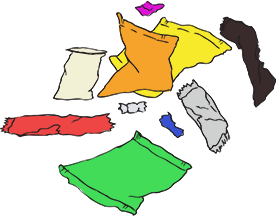
Food Wrappers
Plastic food wrappers such as bags for snacks, candy bar wrappers, and single-use candy wrappers are often mistaken for food by seabirds like Laysan Albatross. Some scientists believe that certain plastics emits an attractive odor to seabirds which causes them to confuse it with actual prey. Once ingested, the plastic wrappers can cause choking and intestinal blockages which can lead to death. To learn more, visit our resources page.

Fishing Net
Fishing nets make up 46% of all marine debris comprising the Great Pacific Garbage Patch. Many of these are “ghost nets,” nets that have been lost or discarded by commercial fishing operations. They are incredibly difficult to see in the water and can entangle and strangle marine animals like the Laysan Albatross. The good news is, there are recycling initiatives for monofilament lines and nets that can help reduce the number of “ghost nets” in the ocean. Visit our resources page for more information.
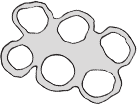
Six-Pack Holder
Six-pack rings are made from very lightweight plastic, which allows them to float easily and be carried by the wind. The rings also degrade by sun and water and the smaller plastic pieces can be mistaken for food, which can harm or kill marine animals. Seabirds like Laysan Albatross and other marine animals can get caught in the rings, so be sure to always cut them before throwing them away. The plastic damages their digestive system, causing death. To learn more, visit our resources page.
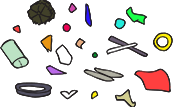
Plastic Fragments
Plastic fragments are sometimes confused for food by seabirds like Laysan Albatross. In fact, 90% of all seabirds have been found to eat plastic. They can become so full of plastic pieces that they no longer eat regular food, causing them to starve to death. Teams of scientists are working to help seabirds that have ingested plastic by flushing their stomachs with water to remove the debris. The birds are not harmed by this process and it greatly increases their survival rate. To learn more about how plastic impacts marine animals and how you can help, visit our resources page.
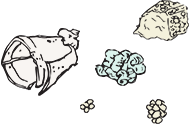
Foam and Styrofoam
Styrofoam cups, packing materials, and other foam products quickly break down into smaller pieces, which are then either consumed by seabirds directly, or else by smaller organisms which the birds feed on. Toxic chemicals such as mercury can accumulate exponentially in the food chain this way, causing secondary poisoning. When seabirds like the Laysan Albatross eat Styrofoam, they can feel full and stop eating normal food, which can lead to starvation. To learn more about how Styrofoam affects seabirds and other marine animals visit our resources page.






